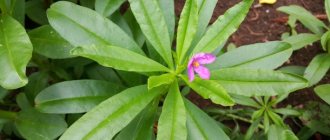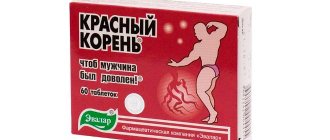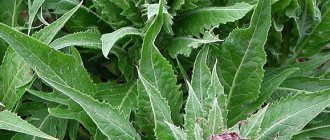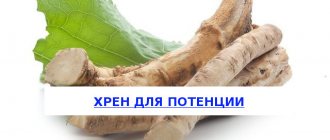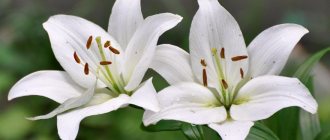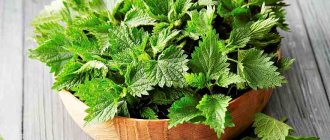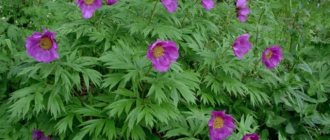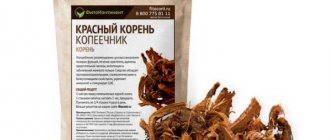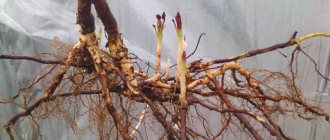The properties of many medicinal herbs that are popular among traditional medicine specialists have not been confirmed by scientific research. Therefore, doctors do not risk prescribing them to their patients. However, such plants are popularly used to prepare healing infusions, decoctions and tinctures that help get rid of serious pathological conditions. This also applies to the muzhik-root tincture with vodka. Let us clarify what such a tool is in a little more detail.
Man-root is one of the names of such a plant as Euphorbia Pallas. The healing properties of this culture have not been confirmed by scientific research, but traditional medicine specialists use it as an immunomodulatory, bactericidal, antiviral, antitumor, laxative and antifungal agent.
It is worth saying that quite a few plants have been officially studied. Their number is in the hundreds, although thousands of them are suitable for treatment. The learning process is slow, as it requires financial costs. Let's return to our topic...
The man-root received its popular name due to its ability to improve erectile function and stimulate male sexual activity.
It is extremely important for Health Popular readers to consider the toxicity of Pallas' milkweed. It is advisable to discuss the advisability of using such a drug for therapeutic and prophylactic purposes in advance with your doctor.
Features of the medicinal properties of the muzhik-root tincture
Doctors say that the unique qualities of Pallas's milkweed tincture are explained by its diverse chemical composition. Lactones in the muzhik root have antitumor and antibacterial effects, and phytoandrogens and selenium can prevent the breakdown of testosterone, which is what helps to strengthen or restore erection, as well as libido. The combination of selenium with a complex of flavonoids, alkaloids and saponins activates the production of antibodies and has antibacterial, antiviral and antifungal effects. It is these components that improve the condition of blood vessels (especially capillaries) throughout the body, and in the organs of the genitourinary system in particular, help reduce pressure, relieve spasms and have a cardiotonic effect.
Thus, vodka tincture effectively increases sexual desire and activates potency, helping to cope with erectile dysfunction. In addition, this remedy exhibits its healing qualities in the treatment of chronic prostatitis, as well as prostate adenoma.
Among other things, this medicine perfectly optimizes metabolic processes, removes all kinds of aggressive compounds from the body, and helps to get rid of excess weight. Healers claim that a tincture of muzhik-root vodka can really stop the growth of metastases in cancer, cope with uterine fibroids and mastopathy.
How to properly prepare medicine with vodka
?
Basically, to prepare such a medicine, it is recommended to use ten grams of crushed dry raw materials per half liter of vodka. The resulting mixture must be sealed and put in a fairly dark place for infusion. The tincture should be shaken periodically throughout the preparation. The medicine must be prepared within twelve days, after which it must be strained, and the plant material must be thoroughly squeezed out using gauze. It is best to store the tincture in a cool, dark place or in a dark glass container.
How to properly take muzhik-root tincture with vodka
?
To treat potency disorders or prostate adenoma, traditional medicine experts advise taking the resulting remedy eight drops at a time. The tincture must be measured with special care, since in case of an overdose it can cause extremely unpleasant symptoms of poisoning. The dose should be taken three times a day, about half an hour before the planned meal. If the man-root is used for preventive purposes, it is best to use it twice a year - in autumn and spring, the duration of the course is one and a half months. When consuming it as a medicine, the duration of one course of administration can be three to six months, the break between courses is one month.
Patients with cancer, uterine fibroids and mastopathy need to take the tincture in a slightly different way. It is advisable to start treatment with one drop - three times a day, the same half hour before meals. With each subsequent day of therapy, the single dosage should increase by one drop and gradually reach three drops. From this point on, you should also gradually reduce the dose one drop at a time. Therapy with muzhik root tincture can last from six months to one year. It is best to take a break between courses of one month.
It is imperative to adhere to the recommended dosage and not take muzhik root without consulting a doctor. The plant is toxic and can cause poisoning, which makes itself felt by disorders in the digestive tract, palpitations, vomiting, disturbances of consciousness, bloody diarrhea and even vomiting blood. If the described symptoms occur, it is best to immediately call an ambulance and inform doctors about the medication you are taking.
Of course, you should not take the medicine if you have any serious health problems without consulting your doctor.
Ekaterina, author of “Popular about health” (www.rasteniya-lecarstvennie.ru) Google
– Dear our readers! Please highlight the typo you found and press Ctrl+Enter. Write to us what is wrong there. – Please leave your comment below! We ask you! We need to know your opinion! Thank you! Thank you!
The use of Euphorbia Pallas in folk medicine is widely known. It is otherwise called the male root. This plant is poisonous; it must be used correctly, strictly taking into account the dosage.
Beneficial features
The root man got his name because of his resemblance to the human figure.
Euphorbia Pallas contains:
- coumarins;
- flavonoids;
- steroids;
- tannins;
- anathraglycosides;
- resins;
- saponins;
- organic acids;
- bitterness;
- selenium.
Due to its high selenium content, the plant stimulates hematopoiesis, it is indispensable in the treatment of anemia, during the recovery period after chemotherapy and radiation therapy, and in leukemia.
Euphorbia prevents the process of metastasis, its antitumor effect is due to increased protective properties and regulation of immunity.
The advantage of the medicinal plant is the content of phytoandrogens, phytoexysteroids, which are an analogue of male sex hormones.
It is these components that lead Euphorbia Pallas to its demand in the treatment of the male reproductive system. It is used to regulate androgen levels, resulting in a beneficial effect on male potency.
Widely used in the treatment of:
- prostate adenomas;
- prostatitis;
- tumor processes;
- disrupted hormonal levels;
- impotence.
In addition, Pallas's spurge is a powerful immunostimulant that has the following properties:
- painkillers;
- anti-carcinogenic;
- antibacterial;
- sweatshop;
- wound healing;
- antimycotic;
- choleretic;
- antiparasitic;
- tonic.
Take note! Herbal medicine believes that the male root helps not only against prostatitis, but also in various branches of medicine.
Recognizing a weed in the garden
It will not be difficult to recognize Pallas’s spurge in the garden; you don’t even need a photo of it. Just remember a plant that is difficult to pull out when weeding due to its powerful and thick root. But this applies to those who live in Altai and Siberia, because our milkweed grows there.
Others can remember his description. The plant grows up to 30-40 cm in height and has a straight stem. The leaves of milkweed come from the stem; they are long and narrowed, looking like an ellipse compressed on the sides. The plant is crowned with an umbrella inflorescence, which in spring is covered with yellow flowers. If you break the plant, it, like celandine or dandelion, secretes a caustic milky juice. If it gets on the mucous membrane or in the eye, oh, and it will burn.
We suggest you familiarize yourself with how calculous prostatitis is treated
You need to uproot the plant to get rid of it on your land. But it is precisely this root that contains all the most useful things. And you need to collect it in the fall, so you will have to endure the presence of an uninvited guest in your field. If you weren’t able to collect the roots, you can buy Pallas’s spurge. It is produced in packages of 50 grams and in 100 gram bottles, as an extract.
The root of milkweed is large. The shape resembles a stocky peasant. Hence the second name - root man. Another version is that this is the mandrake root, about which there are so many myths and legends. Who knows, maybe it is so.
The plant received the “Pallas” addition after the name of the biologist (by the way, another name for this plant is Fischer’s spurge). Peter Simon Pallas spent 6 years on Russian expeditions and devoted some of them to studying the medicinal properties of milkweed. For his work, the plant Euphorbia Pallas was named. Thanks to the natural scientist, its use has ceased to be a mystery.
How to use
Dry male root is available for sale, which is used to make decoctions, alcohol and water infusions. You can also use it in powder. Treatment usually lasts for 1.5 months, but if necessary, under the supervision of a specialist, therapy can be extended.
The following recipes are most often used to prepare the medicine.
Water infusion
A water infusion is used to treat prostatitis, it increases potency. Should be taken 1 tbsp. l. four times a day. When taking it, it is important to ensure equal time intervals between consuming the infusion.
To make it you should take:
The crushed root is poured with boiling water, the container is covered with a lid and the medicine is infused for 30 minutes.
After which it should be filtered. The water infusion can also be used for bathing.
Decoction
A decoction of the male root is widely used for prostate cancer. It is taken in 1 tbsp. l. 2 or 3 times a day, depending on the severity of the pathology. To prepare it take:
- 5 g of Euphorbia Pallas root;
- ½ l. water.
The crushed raw materials are poured with cool water and boiled over low heat for 15 minutes. Next, you need to leave for 2 hours, then strain.
Honey balls
Honey pills increase immunity and help relieve inflammation.
They can be taken as a prophylactic agent to prevent relapses of the disease.
They have a beneficial effect on the walls of blood vessels, which leads to increased erection.
This remedy is taken 3 times a day, 2 balls, washed down with water.
To make pills you should take:
- 100 g of milkweed root;
- 50 g honey.
The crushed root is diluted with honey of a liquid consistency. Balls with a diameter of 5 mm are made from the resulting mass.
Powder
The powder is used to stimulate hematopoiesis, increase the body's protective properties, and regulate immunity. Use euphorbia crushed to a powdery state on the tip of a knife, about 0.03 g half an hour before meals, with water.
Alcohol tincture
Vodka tincture treats prostate adenoma, impotence, and inflammation in the male reproductive system.
To make it you should take:
Crushed spurge is poured with vodka, the medicine is infused for 2 weeks in a dark place. Periodically it should be taken out and shaken thoroughly. After preparation, strain the infusion.
It is recommended to take the tincture according to the following schemes:
- The recovery regimen involves taking 8-10 drops 3 times a day. Treatment lasts for 2 months. This scheme helps for weight loss.
- For the treatment of moderate diseases. Reception begins with 1 drop 3 times a day. Every day the intake is increased by 1 drop. Continues until it reaches 30 drops daily. Next, the dosage is reduced by 1 drop daily.
- For the treatment of severe disease. This scheme is used for oncological process or advanced stage of prostatitis. The scheme is similar to the one described above. You just need to start by taking 15 drops. If you increase the dosage by 1 drop every day, you should reach 30 drops. Next you need to go back to 15 drops.
The duration of treatment depends on the type and degree of the disease. For example, an oncological tumor is treated over the course of a year. As a preventive measure, the medicinal plant can be used in spring and autumn.
The herb should only be taken after meals, as it can cause nausea and vomiting if taken on an empty stomach..
Microclysters
It is good to combine the above treatment with the use of microenemas with the addition of 1 drop of milkweed decoction. Alternation with hemlock tincture gives a good effect. Flaxseed oil 1 tsp is excellent for microenemas. mix oil with 1 tsp. any vegetable oil and 40 ml of boiled water at room temperature. Beat the oils, mix with water, use immediately after preparation. For the best effect, microenemas should be performed at night.
Bath
The subsidence of the inflammatory process is facilitated by taking a sitz bath with Pallas's decoction and the addition of medicinal herbs, chamomile, yarrow, celandine, and sage. The bath temperature should be from 38 to 42 degrees.
It is important to remember that any sitz baths are prohibited in case of oncology and prostate adenoma. You can wipe the perineum from the anus to the testicles with a cotton pad dipped in a warm decoction or water infusion of the male root.
Clay applications
Clay applications prepared with powder give a good anti-inflammatory effect.
Recipes and treatment regimens
Dry raw materials can be purchased for sale. This root of Euphorbia Pallas is used to prepare a decoction, water or alcohol tincture. There is another way to use the root - in powder form. Typically therapy lasts 1.5 months. Under the supervision of a doctor, treatment can be extended. The following recipes are most often used for therapeutic purposes.
Infusion
Peculiarities. A water infusion is recommended for the treatment of the male reproductive system. It helps increase potency and treats prostatitis. An infusion of water is also useful for women. It is also recommended for the fight against fibroids, cysts, and fibroids. The drug helps with mastitis and infertility, if the latter is caused by inflammation. Take the infusion one tablespoon at a time. The medication is repeated four times a day at regular intervals.
Components:
- milkweed root - 5 g;
- water - 0.5 l.
Manufacturing
- The root must be chopped.
- The resulting raw material is poured with boiling water.
- Cover the container with a lid and infuse the medicine for half an hour.
- Filtered.
This infusion is used for baths for severe joint or muscle pain. Such a bath can quickly relieve discomfort during an exacerbation of gout.
Decoction
Peculiarities. Healers recommend drinking a decoction of Euphorbia Pallas for diseases of the respiratory system, and the root is especially useful in the treatment of bronchitis and tuberculosis. It even helps in the treatment of bronchial asthma. The decoction is indicated for oncology. Take it one tablespoon two to three times a day, depending on the severity of the pathology.
Components:
- milkweed root - 5 g;
- water - 0.5 l.
Manufacturing
- Euphorbia root is crushed.
- The resulting raw material is poured with ordinary water.
- The solution is boiled over low heat for a quarter of an hour.
- Then it is recommended to infuse the decoction for two hours.
- After this, the drink is filtered.
Powder
Peculiarities. The powder, as reviews show, helps with skin pathologies. It is recommended to sprinkle this product on purulent wounds, treat burns and abscesses. The product allows you to effectively treat furunculosis. But even when used externally, one should remember moderation. It is recommended to sprinkle the affected areas with powder twice a day.
Components:
- milkweed root;
Manufacturing
- The raw materials are softened in a mortar.
- Then grind in a coffee grinder.
Honey pills
Peculiarities. The main purposes of such pills are to increase immunity, strengthen the cardiac system and improve the condition of blood vessels. By improving the condition of the walls of blood vessels, it is possible to normalize blood pressure. It is recommended to take two pills three times a day. They are washed down with water.
Components:
- milkweed root - 100 g;
- honey - 50 g.
Manufacturing
- First, grind the milkweed root into powder.
- The raw materials are diluted with liquid honey and mixed.
- Small pill-balls with a diameter of 5 mm are formed from the viscous mass.
Alcohol tincture
Peculiarities.
Tincture with alcohol or vodka is recommended for the treatment of pulmonary diseases. Also, with the help of vodka tincture, prostate adenoma, inflammatory processes in the genitourinary system, and impotence are treated. Components:
- spurge - 10 g;
- vodka - 0.5 l.
Manufacturing
- Euphorbia is crushed a little.
- Small raw materials are poured with vodka.
- The product is placed in a dark place and left for 14 days.
- Periodically, shake the container with the future tincture thoroughly.
- The drink is filtered.
Nutrition and treatment with male root
An important component in the treatment of male root prostatitis is a balanced diet. The patient should have the most varied food based on dairy and plant components.
It is necessary to exclude pickled, salted, smoked foods, and any alcoholic beverages. During the period of exacerbation, it is important to increase the nutritional requirement; during remission, weakening is possible.
- rich soups;
- fatty foods;
- fried food;
- fruits with high acidity;
- products that cause increased gas formation.
- apples;
- watermelons;
- lean fish;
- lean meat;
- skim cheese;
- dairy products;
- porridge;
- Walnut;
- pumpkin seeds.
After the exacerbation subsides, it is recommended to switch to your usual diet gradually, over the course of a month.
Milkweed contraindications
Despite its many beneficial qualities, Pallas's spurge can be seriously poisonous. Before using it, you need to consult with your doctor who will assess your health condition. Milkweed contraindications:
- hyperexcitability;
- individual sensitivity;
- tachycardia.
Due to the toxicity of the plant, it is important to strictly follow the dosage. Do not allow milkweed to come into contact with the skin, as this can lead to burns. In the event of such a development, you need to rinse the burned area with running water as quickly as possible. If the dosage is not observed, a man may develop the following side effects, which are a sign of poisoning:
- labored breathing;
- fainting;
- vomiting blood;
- diarrhea with bloody inclusions;
- cardiopalmus;
- dizziness.
To neutralize these symptoms, you should take activated carbon, which is calculated based on the patient’s body weight, 1 tablet per 10 kg. weight. It is necessary to drink as much clean water as possible, thus eliminating toxins from the body. For mild vomiting, it is recommended to drink warm milk. Its action is aimed at binding toxic products and removing them from the body.
Important! Euphorbia is not a substitute for drug treatment, so it is necessary to continue the therapy prescribed by your doctor.
Contraindications
It is not recommended to use plant-based products if there are the following contraindications:
Treatment is carried out only as prescribed by the attending physician or an experienced herbalist. It is necessary to strictly follow the recommended dosages and frequency of administration. Otherwise, an overdose of milkweed may cause severe side effects:
- bloody vomiting
- fainting
- tachycardia
- difficulty breathing
- bloody diarrhea
- severe dizziness
To neutralize the toxic effect of milkweed on the body, it is necessary to carry out the following manipulations:
- urgently take a sorbent (activated carbon or any other)
- drink plenty of fluids to flush out toxins from your body
- drink warm milk (if there is no severe vomiting) - this product quickly binds toxins and removes them from the body
If the patient has difficulty breathing, it is necessary to urgently call an ambulance. Severe overdose can result in death.
A little history
For the first time, Yuba Ephorb, a doctor who served at the court of the Moorish king, became interested in the healing properties of individual plants belonging to the Euphorbia genus. As for the scientific name of a particular species, there was a confusing story. Initially, the description of the plant was carried out by the German botanist Fedor Fischer. But out of absent-mindedness, he assigned it the name of an already existing species. Subsequently, this oversight was noticed by another botanist, Nikolai Turchaninov. He specialized in species taxonomy and wanted to correct the mistake by giving the plant the name of Fischer himself, but through an oversight he wrote it down as Pallas's Euphorbia.
This perennial was once considered a good remedy for constipation. Its juice was used to get rid of birthmarks, warts and calluses. Mongolian and Chinese healers have long used muzhika root. The use and beneficial properties, photos and history of this plant have been studied so well that it is still recommended today for enhancing sexual desire, maintaining an erection and treating sexually transmitted diseases.
How the root treats the prostate
If you follow the dosages recommended by the course of treatment, the red root for prostatitis allows you to achieve amazing results:
- Kopechnik removes spasm of smooth muscles, due to this, urinary function is normalized. The patient visits the toilet less often.
- Sexual desire increases, which can be suppressed due to prostatitis. The composition of prostate secretion improves.
- The size of the prostate decreases and its growth slows down. The outflow of fluid from this organ improves.
- It has a tonic effect on the male body. Golden root contains many vitamins and essential amino acids that enhance immunity.
- Toxic compounds, heavy metals, and salts are removed from the body.
It acts as a powerful immune stimulant, so it can be used for almost any purpose and be effective everywhere. The man root, or Euphorbia Pallas, exhibits excellent medicinal properties in the treatment of any male sexual problems, including sexually transmitted diseases, various tumors, including malignant ones, prostatitis, all kinds of testicular lesions, prostate adenoma, strengthens and prolongs male viability. Helps women with mastopathy, cysts, inflammatory infertility and uterine fibroids.
The benefits of such a miracle as Pallas's spurge do not end there. Its use is also effective for the treatment of skin diseases. To do this, the roots are dried, ground and used as a powder. It has an antifungal effect, disinfects, and stimulates tissue restoration. They treat scabies, ulcers, fistulas, boils, burns, abscesses and even toothache. Expulsion will help get rid of warts, calluses and age spots.
Man-root is an excellent blood purifier, promotes hematopoiesis, an ideal assistant for leukemia and anemia. Euphorbia Pallas exhibits medicinal properties in treating the bladder and kidneys, normalizes metabolism, and is used as a tonic and restorative. Its use is indicated for problems with the respiratory organs (bronchitis, bronchial asthma, tuberculosis, pneumonia).
We suggest you read: Is pregnancy possible with prostatitis?
Herbalists recommend using euphorbia as a drug with anticoagulant properties for the prevention of heart attacks, thrombophlebitis, strokes with sepsis and other blood-related diseases.
Short description
Euphorbia Pallas (or Fischer) is a herbaceous plant with a well-developed root system and a long, strong stem. Its height can reach forty centimeters. On a simple, well-haired stem there are wide opposite leaves. Moreover, at the bottom they are scale-like, and at the top they are lily-like.
The man's root, the use and beneficial properties of which were known to our distant ancestors, blooms in May. Its fruit looks like a large flattened box with three brownish nutty seeds. All parts of the plant secrete abundant milky sap.
Collection of raw materials
As a rule, the root of Euphorbia Pallas is used in medicine. They begin to harvest it immediately after the above-ground part of the plant wilts. This usually happens no earlier than July.
Since the milky juice of the grass is poisonous, its collection is carried out using gloves made of fairly dense material and special safety glasses. The root is removed by hand, trying to dig it out along with the lateral shoots. The extracted raw materials are cleaned of soil residues, washed and left to dry in the sun. After some time, the peeling brownish bark is removed from the roots, cut into large pieces and laid out at some distance from each other. Dry them in the open air, remembering to turn them over periodically. Otherwise, the raw materials will begin to rot and acquire an unpleasant musty smell.
Man-root: medicinal properties and contraindications
For men, this plant is useful because it contains a high concentration of phytoandrogens and phytoexysteroids. The active action of these substances helps to quickly get rid of many diseases of the reproductive system. But at the same time, it should be used with caution by those who suffer from allergies.
Euphorbia Pallas has antitumor, restorative, laxative, bactericidal and tonic properties. Thanks to its unique composition, it is able to actively suppress inflammatory processes occurring in the human body.
Indications for use
Adherents of alternative medicine have been successfully using this herb (man root) for a long time. The use and beneficial properties of the plant, according to them, make it possible to quite effectively combat malignant tumors, gastritis, stomach ulcers, diseases of the bladder and kidneys. Preparations made from this perennial are indicated for phlegmon, boils, abscesses, purulent wounds and burns. The herb, endowed with strong laxative properties, is used to cleanse the intestines of toxins accumulated in it.
In folk medicine, Fischer's spurge has been used since ancient times to treat prostate adenoma, erectile dysfunction, testicular damage and chronic prostatitis. Preparations made from this plant are indicated for anemia. They are often prescribed to people who have undergone chemotherapy to restore blood flow. The herb prevents the growth of metastases and helps with leukemia.
Man root, whose medicinal properties are due to its unique chemical composition, is effective against bronchitis, tuberculosis, asthma and pneumonia. It is used to combat various gynecological diseases, including cysts, fibroids and infertility caused by inflammatory processes. Mongolian healers use this amazing plant to treat liver echinococcosis and eczema. Herbalists use Euphorbia Pallas to reduce birthmarks, warts and calluses.
Medicinal properties
The unique chemical composition of the plant root allows Euphorbia Pallas to be used in oncology.
The herb is used to prepare drugs that have antitumor and antimetostatic effects.
Good results can be achieved by using the root to combat neoplasms of various origins.
The herb is often used in a comprehensive recovery program after chemotherapy (the process of metastasis formation is stopped).
One of the main qualities of the plant is the ability to restore the metabolic process of sex hormones in men - androgens. This makes it possible to use an extract from the root of the plant in the treatment of chronic prostatitis, prostate adenoma, testicular damage and other diseases associated with decreased erection in men.
Quite often, experts insist on using the root of the herb when carrying out complex treatment of various diseases of the liver, digestive organs, kidneys, and bladder.
Due to the fact that the milky juice of the Muzhik root contains a lot of selenium, extracts are prepared from it, which are used to stimulate the formation process. This property of the plant allows it to be used in the treatment of anemia, to cleanse the blood, thin it, strengthen the walls of the knee joints and veins, and stabilize the hormone profile of patients.
Preparations for the preparation of which the grass root extract was used showed excellent results in increasing the efficiency of the deworming process.
The root is actively used in the treatment of various types of respiratory diseases and.
Since the chemical composition of the root gives it the ability to disinfect and fight inflammatory processes, it is often used in the treatment and prevention of diseases such as furunculosis, trophic purulent ulcers, eczema, lichen, scabies and various fungal diseases.
The powerful immunostimulating properties of the plant make it possible to use it to restore the body in case of nervous overexcitation or physical fatigue, as well as to treat chronic depressive conditions. Extracting the root of Euphorbia Pallas helps to increase a person’s ability to work without causing a feeling of drowsiness and passivity.
Euphorbia Pallas is actively used in the treatment and prevention of various types of human diseases and restoration of their ability to work.
Side effects and overdose
It should be noted that man root (application and beneficial properties, reviews and photos - all this information is presented in this publication) is a very poisonous plant. Its milky juice contains a large amount of euphorbic acid anhydride. The first sign of Fischer's milkweed poisoning is considered to be vomiting, accompanied by debilitating diarrhea, swelling of the tongue and a burning sensation in the mouth. The patient also experiences stomach pain, cramps, a sharp decrease in blood pressure, arrhythmia and heart failure. In especially severe cases, poisoning with this plant is fatal.
Overdose and long-term use of Pallas's milkweed can lead to skin ulceration and chemical burns. Juice that gets into the eyes can cause blindness. Male root should not be used for tachycardia, increased excitability, as well as during pregnancy and lactation. Allergy sufferers should use this plant with extreme caution, strictly following the dosage recommended by the doctor.
Methods of application
The man-root, the benefits and harms of which were known in ancient times, is actively used in folk medicine. All kinds of decoctions, tinctures and powders are made from it.
To prepare one of these folk remedies, take five grams of crushed root and pour half a liter of boiling water over it. All this is wrapped well and left for half an hour. After thirty minutes, the product is filtered through several layers of gauze and taken a tablespoon two to four times a day. This tincture effectively copes with cysts, mastopathy, fibroids, prostatitis and impotence.
To strengthen the immune system, stimulate hematopoiesis and activate the body's defenses, powder prepared from milkweed root is often used. It is taken 0.03 grams three times a day, half an hour before meals. The powder is also sprinkled on purulent wounds, burns and abscesses.
To combat stomach ulcers, tuberculosis, epilepsy, anemia, bronchial asthma, bladder and kidney diseases, use a decoction prepared from five grams of crushed Fischer's milkweed root. It is filled with half a liter of filtered water and placed on the stove. The broth is boiled for fifteen minutes, infused for two hours and filtered through cheesecloth. Take the remedy three times a day, a full tablespoon before meals.
To increase immunity and prevent various diseases, it is recommended to use alcohol tincture. To do this, take ten grams of the root and grind it. The resulting powder is poured with half a liter of 70% alcohol and put in a dark place. Infuse the product for a week, shaking it periodically. Take 8-10 drops three times a day, half an hour before meals.
Home remedies from Euphorbia Pallas
Root tincture: 10 g of crushed plant root is poured with 500 ml of alcohol (70%) and infused in a dark place for 10-12 days. Then filter and begin to take 15 drops, diluted with water, 3 times a day after meals, increasing the dose by 1 drop every day. Having reached 30 drops, the dose begins to be reduced daily in reverse order by one drop - up to 15 drops. The duration of treatment depends on the indications and severity of the disease. For anemia and impotence, the course usually ranges from 1 to 3 months, for cancer lesions - from 2-3 months to 1 year. For preventive purposes, it is recommended to take the tincture in the fall and spring for 1.5 months.
Root infusion: 5 g of ground herb root is poured into 500 ml of boiling water and infused for 30 minutes, then filtered. Take for anemia, impotence, prostatitis, uterine fibroids 2-4 times a day, 1 tablespoon, course from 3 to 6 months.
Eggplant baked in the oven
28.02.2021
Delicious kefir pancakes for the whole family
28.02.2021
Pesto sauce: how to make the famous Italian sauce at home
28.02.2021
Root man: application, reviews
People who have actually used this perennial talk about the high effectiveness of this product. According to them, with the help of preparations made from Fischer's milkweed, you can get rid of many health problems. It has an excellent wound healing effect and helps strengthen the immune system.
Man root is also often used to treat sexually transmitted diseases. Use for men is due to the fact that this plant contains substances that affect potency.
Also, everyone who has used this plant recommends taking precautions and remembering what to do in case of poisoning. The first thing to do in case of an overdose is to call emergency help. Before doctors arrive, you can do a gastric lavage with a 2% soda solution and drink cold milk, flaxseed suspension or jelly.
- Author: Maria Sukhorukikh
Rate this article:
- 5
- 4
- 3
- 2
- 1
(0 votes, average: 0 out of 5)
Share with your friends!
“The root man gave me back my health”
After a series of surgical operations, a resident of the Smolensk region turned to traditional medicine
Vladimir Kharinchuk experienced the full extent of the powerlessness of traditional medicine at the age of 26, when he was placed on the operating table three times over the course of ten days. The surgeons were unable to do anything against the disease, but the patient was almost sent to the next world. A series of risky operations divided Vladimir’s life into two parts. The first - in which there was a lot of physical suffering, endless visits to clinics and hospitals and disbelief that people in white coats would help him cope with his illness. The other half of his life can rightfully be called the era of recovery, when Vladimir turned to traditional medicine recipes for help and achieved amazing results. Chronically ill Kharinchuk began to feel better and better, and now leads a full life. This is evidenced at least by his marital status: Vladimir has a wife, three sons and one daughter.
Illnesses lasted from childhood
Before we tell you about the deer root and Pallas's euphorbia (man-root), thanks to which our hero regained his health, it is necessary to touch upon the medical history of Vladimir Kharinchuk.
Vladimir was born in the Chunsky district, in the village of Vesel. This place in the Irkutsk region is known for the fact that uranium ore lies next to it. Such a neighborhood could not but have a detrimental effect on the health of the surrounding residents. Volodya was born with a hereditary ulcer, high stomach acidity and a blood disease. As far as I can remember from childhood, I have always felt pain. The parents took the boy to various medical institutions. The maximum that the doctors achieved was that the child’s pain subsided for a short time, and then his health deteriorated again. Doctors said that the causes of Volodya’s illness were related to a disorder of the nervous system. Oddly enough, when the young man went to serve in the army, the stomach pain stopped. Kharinchuk served as a cook. For his excellent studies at the school of cooks, he was assigned to the headquarters of the Trans-Baikal Military District and appointed commander of the economic department. The army daily routine, strict adherence to the regime, good nutrition only benefited the soldier, and it seemed that the hereditary disease was receding. However, from the very first days in civilian life, the guy’s pain resumed with renewed vigor. He settled in Shelekhov, tried to work at one of the factories, but quit, despite good earnings. Harmful production conditions could have deprived him of his remaining health overnight. Then he changed several more jobs until he got a job as a driver at a car depot. Soon, in an unconscious state, Vladimir was removed from under the car he was repairing, and an ambulance took him to the hospital under the surgeon’s scalpel. Although a few days before the sad events, Vladimir suddenly felt unwell, but when he went to the clinic, he heard his diagnosis: “Malingering!” The first operation ended unsuccessfully. I barely woke up when blood started gushing out. It turned out that the doctor placed the stitches poorly. After the second operation, the stomach was sutured so tightly that water could not flow there and accumulated at the level of the larynx. After the third operation, the patient was somehow “darned”, but in such a way that the intestines were filled with blood. Vladimir Kharinchuk summed up the result of three surgical interventions on his body in two weeks: the doctors cheated. And indeed, he left the hospital room having lost three-quarters of his stomach - this was the price to pay for getting rid of a perforated ulcer. Saving a patient is the business of the patient himself.
At that time, Vladimir was 26 years old.
He just got married. I had to somehow arrange my future life, and this was not easy to do, having serious health problems. Chance helped. A good friend, Alexander Skvortsov, was fond of books about medicinal plants and went on trips to collect useful herbs. To improve his health, he suggested that Vladimir try maral root, which is used in folk medicine as an aphrodisiac for loss of strength, exhaustion, and sexual dysfunction. After ten days of consuming the liquid extract from this root, Vladimir felt a surge of strength and normalization of blood pressure. Not much time passed after the surgical torment, but his affairs still began to improve. This became especially clear when we had to unload cars with cement at the new place of work. Fifty-kilogram bags of construction materials were unloaded by 12 people, the work was going smoothly and could drag on for an indefinite period of time - and this would lead to downtime of the car. And then Vladimir decided to set a personal example. To spur on the work ethic of his colleagues, he staged a demonstration performance: five times he carried two bags of cement in his hands to a utility warehouse located twenty meters from the carriage. That day he finally believed in the healing power of traditional medicine. The root man is a real giant.
Vladimir’s first mentor was Alexander Skvortsov, who by this time had already acquired some knowledge about medicinal roots.
He, in turn, was taught by one grandfather, who showed and told him where the root grows and what healing properties it has. In Siberia, a wonderful plant can be found only in the south of the Chita region - along the Onon, Shilka and Argun rivers. The roots of the plant vaguely resemble ginseng, and therefore quite often local residents mistake it for the famous Ussuri endemic. The root man, like ginseng, looks like the figure of a man. The main rhizome is the body from which the neck and head grow; some specimens have lateral processes - these are arms and legs, and even the reproductive organ. And its color, if peeled, is similar to ginseng. But that's where their similarities end. In fact, the root man is far superior in size to the ginseng root. Compared to him, he is simply a giant, his weight reaches several kilograms (Vladimir Kharinchuk and Alexander Skvortsov came across three-kilogram specimens). When the skin is damaged, abundant lachrymal milky juice is released, which is absent in ginseng. The man-root grows in open places, while ginseng is a shade-loving plant. The wonderful properties of the root
For about ten years, Alexander Skvortsov and Vladimir Kharinchuk have been collecting milkweed, going for this purpose every autumn to the Shilkinsky district of the Chita region.
September-October is the most suitable period for its preparation. By this time, the aboveground part of the plant withers. The root, imbued with miraculous power over the summer, begins to lose its poisonous properties and, after certain processing, helps to defeat many diseases. However, obtaining muzhik root is not so easy. When digging roots, precautions should be taken: contact of milky juice with the eyes and respiratory tract causes severe lacrimation, runny nose, redness of the eyelids and nasopharyngeal mucosa. There are also burns with the formation of blisters on the skin. Therefore, it is better to carry out the collection with glasses and gloves. Despite these warnings, the process of root digging itself, according to Vladimir’s experience, is already a kind of therapeutic procedure. Personally, he is charged with energy when, on the rocky and gravelly slope of a hill, he discovers a bed of inconspicuous and withered bushes. He digs them out carefully, entirely, along with large lateral roots, trying not to damage them. The fresh root emits a specific smell and has a beneficial effect on a person - calluses on the hands disappear, and the skin turns pink and smoothes. Typically, pickers bring 25-30 kilograms of raw root per season. After drying and cutting, this weight is reduced to 4-5 kilograms. Then the raw material is turned into powder, and in strictly dosed quantities it is ready for use. Now Vladimir does not have stomach problems. Other misfortunes have also disappeared. This medicine helped him cleanse and restore his blood. This root also has a number of other remarkable properties. It is contraindicated only for pregnant women and children. When used externally in the form of a 70% alcohol solution, the man's root treats joint pain. The use of an aqueous solution leads to weight loss, the powder relieves toothache after 15 minutes if placed on the tooth; helps get rid of malignant tumors, treats some sexually transmitted diseases. Dozens of people who turned to Vladimir for help were able to verify all this. And he always responded to their requests. Help "Kopeyki" Leuzea safflower
- maral root, Rhaponticum Carthamoides (Willd.) Herbaceous perennial plant 80-120 cm high, family Asteraceae (Compositae).
Leuzea grows in Siberia, Altai and the Sayan Mountains, but was introduced into cultivation for industrial harvesting. The rhizome of the plant is used for medicinal purposes. Clinical studies of tincture and liquid extract of Leuzea safflower were carried out mainly on patients suffering from functional disorders of the central nervous system, as well as on patients with physical and mental fatigue, impotence and chronic alcoholism. The greatest therapeutic effect of Leuzea herbal preparations was noted in the treatment of mild manifestations of asthenia, increased fatigue, bad mood and decreased appetite, irritability, headaches, sleep disorders, decreased sexual activity, and various vegetative-vascular disorders. When treating this group of patients, after 10-20 days they experienced an improvement in their general condition and mood, their sleep and appetite normalized, and their performance increased. In some patients, the vegetative-vascular sphere was normalized and an increase in sexual potency was noted, depressive symptoms decreased, and neuropsychic tone increased. No side effects from the central nervous system and cardiovascular system, as well as a negative effect of the tincture and liquid extract of Leuzea safroliformes on the main blood and urine parameters in patients with long-term use of the drugs were not identified. No contraindications to the use of Leuzea safflower preparations have been identified. Euphorbia Pallas, root man
Euphorbia family. A perennial herbaceous plant with a long and powerful branched root, reminiscent of ginseng root, with thick flowering bare stems. The leaves are alternate, scale-like in the lower part of the stem, lily-like in the middle, arranged in whorls, 2-5 pieces each. The inflorescence is an umbrella, large. The fruit is dry and breaks into three nuts. All parts of the plant at the break secrete abundant milky sap. Distributed in Transbaikalia (mainly in the Chita region), in rocky steppes and on gravelly slopes in river basins. The chemical composition has been poorly studied. Saponins, flavonoids, tannins, glycosides, resins (about 8%), traces of anthraglycosides, bitter extractives, ascorbic acid, starch were found in the roots. In folk medicine of Transbaikalia it is valued as a blood purifying, tonic and stimulant with ginseng-like action. Has a laxative and emetic effect. Recommended for a wide variety of diseases: peptic ulcers, tumors, diseases of the lungs and gastrointestinal tract. The root powder is sprinkled on ulcers, boils, and burns. The juice is used to destroy warts, calluses, and spots on the face. A very interesting and promising plant for further study, especially for antitumor activity. Attention! The plant is poisonous and should be handled with care!
